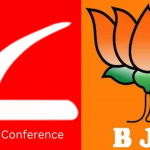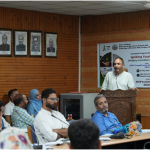After the neutralisation of Article 370 and 35 A, political reorganisation of Jammu and Kashmir was enabled. It led to the realisation of the long pending demand of the Ladakhis for the realisation of the Union Territory (UT) status. For decades right from independence there was a constant vociferous movement going on in Ladakh. Its voice often resonated in New Delhi but Ladakh was not heard. The year 2019 did give a sigh of relief to the people in Ladakh as their demand for UT was granted. It has to be understood that the demand for the UT status in Ladakh was generated due to the insecurity in terms of political, social and religious terms. Ladakhis leaders and civil society had apprehensions that their culture will be appropriated if it remains an administrative and political part of Jammu and Kashmir and as whole. Traditionally it was the Ladakh Buddhist association (LBA) that worked tirelessly for the UT status and worked at various fronts to generate public opinion to get the UT status. It is pertinent to mention that when Kashmir valley was going through the worst phase of terrorism and there was dearth of law and order leading to internal displacements in 1990. LBA was conscious that this was not the fate that must be meted out by Ladakhis. It sought alliance with the organisations that batted for the political reorganisation of Jammu and Kashmir. It was a taboo then to talk about the quadripartition of the erstwhile princely state of Jammu and Kashmir. It is in such a phase that in order to get traction for the UT status, LBA forged an alliance with the Jammu based Jammu Joint Students Federation (JJSF) and Panun Kashmir, the frontline organisation of the religiously cleansed Kashmiri Pandits. It led to the formation of an amalgam called People’s Initiative for Peace and Unity (PIPU).It had the mass support and was able to garner support from the strategic community across the nation. The backbone of this movement was the support of the students on ground for the mass mobilisation. The rationale that guided this initiative and gave momentum to this movement was that Kashmir valley being caught in the pincer of competitive radical terrorist operations, there was a need to keep the Himalayas safe for the nation by keeping intact the connections between all the three regions of Jammu and Kashmir. And the blueprint that guided this in strategic terms was that Ladakh be given the UT status, Jammu is bestowed with the statehood and in Kashmir there was a need for the creation of a foothold for the internally displaced Kashmiri Pandits so that return and rehabilitation is enabled. It is for the strategic community to decide whether the realisation of that plan would have settled the aspirations of the people in Jammu and Kashmir or not. But one thing is clear that Ladakhi aspirations were addressed in 2019 with the grant of UT status. For a considerable period there has been a new mobilisation in Ladakh after the neutralisation of Article 370 and 35 A that led to achievement of its UT status. Leh Apex Body(LAB) and Kargil Democratic Alliance(KDA) under the leadership of a well-known activist Sonam Wangchuk is on the agitationist path seeking inclusion of Ladakh in the Sixth Schedule and insulating Ladakh from external influences. If seen in totality the demand for the inclusion in the Sixth Schedule means different things to different people. It was meant to address the specific situation of the certain North-Eastern states. There may be some resemblance in Ladakh but the challenges are different. China is watching the situation in Ladakh and buying its time. It has a strategic interest in the Himalayas and Ladakh is crucial for the Indian defence in Ladakh. New Delhi must deal this issue on priority and make the agitationists internalise that Ladakh needs direct monitoring to safeguard the Northern frontier and as such granting the UT status is not a mere formality but to develop Ladakh as a national security model that integrates the people in the mainstream to safeguard the territorial integrity and sovereignty. UT of Ladakh must be empowered with what is specific for its development aping the laws applicable in North-East will not solve the issue. Sonam Wangchuk and his companions in the agitation must internalise that national interest is supreme and so is the defence of India in the Himalayas.
New Delhi Must Address Ladakh Issue

Sign Up For Daily Newsletter
Be keep up! Get the latest breaking news delivered straight to your inbox.
By signing up, you agree to our Terms of Use and acknowledge the data practices in our Privacy Policy. You may unsubscribe at any time.
Leave a Comment
Leave a Comment
Stay Connected
Latest News
Recent Posts
- Govt committed to improving people’s lives: Javed Rana
- AIFOF office bearers call on Rana
- Shri Buddha Amarnath Yatra : CCTV cameras installed along 14 km route
- Outreach prog for agri start-ups under JKCIP begins at SKUAST-K
- IUST organises workshop to strengthen institutional readiness for NAAC reassessment







